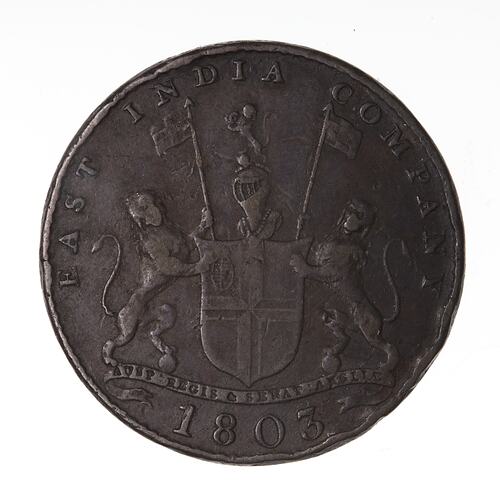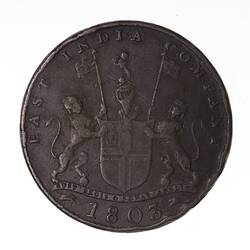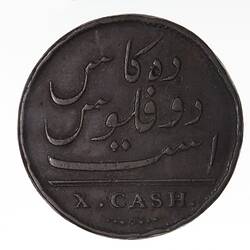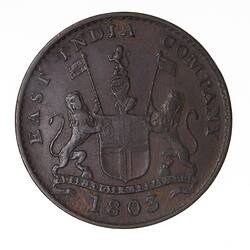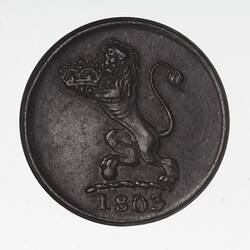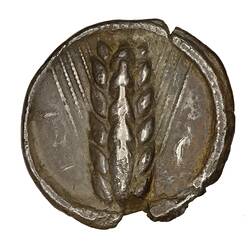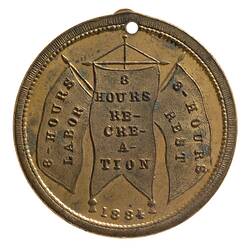Summary
10 Cash, Issued by, Madras Presidency, India, 1803
Minted by Soho Mint, Birmingham
Obverse Description
Company arms, a quartered shield (simplified oval arms of France and England in the first quarter of the shield else plain); crest of a helm with lion holding the Imperial Crown; lion supporters, each holding a banner charged with a cross; motto below on ribbon, AUSPICIO REGIS A SENATUS ANGLIAE (translation: under the auspices of the king and senate of England); around above, EAST INDIA COMPANY; below, 1803
Reverse Description
Legend in Persian (translation: ten cash make two falus); in exergue, X . CASH.
Edge Description
Plain
Significance
The Presidency of Madras placed a large order for copper coins with Matthew Boulton's Soho Mint, Birmingham, England in 1802. The denominations to be struck were 20, 10, 5 and 1 cash. It was cheaper to have such a large order of copper coins, some 35 million pieces, struck on Boulton' steam presses and shipped to India, than to have them struck locally. Local production of copper coins continued through the early 1800s with the local coins circulating side by side with the British strikings. The Soho coins were designed by John Phillip and the dies engraved by Conrad Heinrich Kuchler. By 23 May 1803 over 6 million 10 cash coins had been shipped from London. In Madras they circulated at 40 cash to the fanam and 42 fanam to the pagoda.
More Information
-
Collection Names
-
Collecting Areas
-
Acquisition Information
Transfer from National Gallery of Victoria (NGV), George McArthur, 15 Mar 1976
-
Date Issued
1803 AD
-
Issued By
-
Mint
-
Engraver
Conrad H. Kuchler - Royal Mint, London & Soho Mint, Birmingham, Great Britain, 1802
-
Denomination
-
Series
-
Material
Copper
-
Axis
06
-
Classification
-
Category
-
Discipline
-
Type of item
-
Dimensions
25.8 mm (Outside Diameter), 6.466 g (Weight)
-
Shape
Round
-
References
Pridmore 206 KM#319
[Book] Pridmore, Fred. 1975. The Coins of the British Commonwealth of Nations, Part 4, India. 1., 34 & 74 Pages
[Book] Bruce, Colin R. 2006. Standard Catalogue of World Coins 1801 - 1900.
[Book] Doty, Richard. 1998. The Soho Mint and the Industrialization of Money., 324-325 Pages
-
Keywords
British Commonwealth Coins, British Commonwealth and Empire Coins
